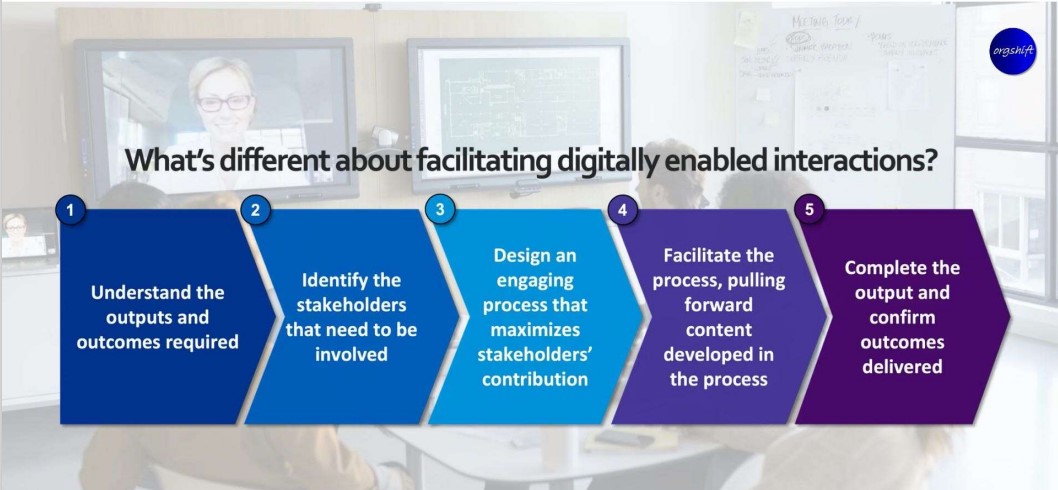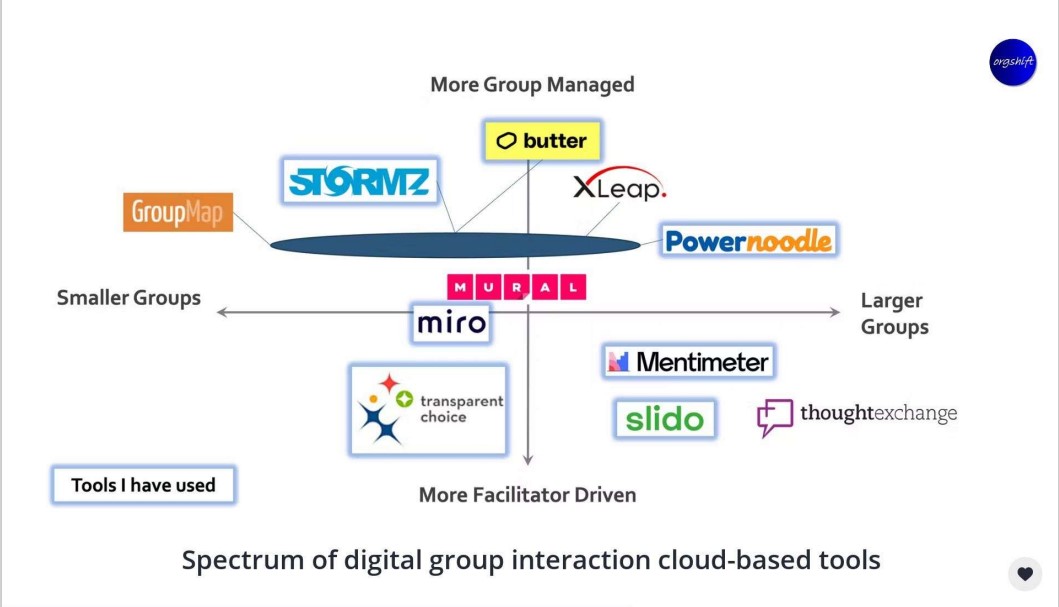Collaborative Strategy Building in a Digital World
Updated:
Published:
"We can’t just virtualize the way we used to do it"
- Chris Carter
Chris Carter is a strategy expert who has built a wealth of experience with KPMG and beyond, who joined us to discuss the opportunities of how strategic planning is changing in the context of a rapidly digitalizing world.
In this article, we dive into the key insights from a webinar where he shares his expertise on collaborative strategy building in a digital world.
This webinar focused on the first three steps of the strategic planning process, the development of the vision, mission and strategic goals. Traditionally this was probably a two-day off-site in a nice hotel, with exclusive access to top brass only. The output was cascaded as a thing that the rest of the organization had to get on with delivering.
There are four problems with this model:
- The process fails to draw on the breadth of knowledge in and around the organization by limiting access to an elite few. Yet we know that the best ideas often come from middle management, not leadership.
- By forcing decision making to be in a group, to a timetable, several well-documented decision science issues occur, such as 'loudest voice', noise and recency bias.
- Logistics are prohibitive; the cost and disruption of making these events happen in a global organization makes them a luxury when they need to be a core process.
- Output fails to embed as a living plan, adapting and evolving to provide responsive direction, therefore rapidly depreciating the relevance of any projected outcomes.
To help solve this Chris highly recommended Sightline, from Rebecca Sutherns, who explains how to develop strategy that is, "gathering momentum not dust".
He calls out the 6A's as a great framework to use as a base for strategic planning:

Of course, this is only a framework: your reality will be a bit different so apply intelligent adaptations for maximum impact.
Indeed, the key is not the model; it's the change in mindset: from strategy being a discrete moment in time activity to an always on monitor that keeps actions aligned to latest reality.
Digital Synergy: Unlocking Collaboration in Strategy Building
If Sightline gives us the model for how you build an effective plan, then digital interaction is the springboard for how you make it happen, especially when it comes to collaborative strategy building. In an era defined by digital transformation, hybrid working, and remote participation, the essence of formulating a strategy is becoming increasingly collaborative.
Leveraging technology, Chris Carter elucidates how organizations can capitalize on current tools to foster collaboration and streamline the strategy building process:
- Map out where tasks are better together vs. better apart. Reviewing analysis, generating feedback, framing ideas; all improve if you give people time and space, rather than trapping them in a room with their boss.
- Broaden stakeholder experience. Making better use of townhall meetings is a good example, whether that’s via voting apps or AI processing of opinions. For public sector and non-profit especially this opportunity is just too important to ignore.
- Breakdown complex strategic questions into more specific solvable ones that can enable a rational debate to find alignment behind a set of strategic goals.
- Identify areas of disagreement as a focal point for shared time, therefore addressing potential problems while saving time validating uncontentious points.
- Make sure you have a facilitator to make it happen; the technology needs human guidance to build trust and encourage participation with participants.
Here are the five steps key recommended for putting a digital interaction process into place:

Experienced practitioners might rightly reflect on the fact that this looks quite like any stakeholder engagement plan, but there is a critical difference. You are doing something different, potentially challenging decades of learned experience of how this kind of thing happens, so be ready for the challenge of winning over hearts and minds to a new way of working.
Executives may also feel fear with respect to their power being challenged by broadening participation, which needs the careful management of a skilled facilitator.
Innovative Tools for Collaborative Strategy Building
Powerpoint and excel are no longer good enough. Chris shared his take on some of the options out there to facilitate change, along with a key piece of advice to any consultant in this space – "we can’t just virtualize what we used to do".

He also shared the results of a Digital Transformation program he facilitated using TransparentChoice, where the IT leadership team of a Canadian city were able to apply Value and Ease criteria to identify and prioritize the most important programs in their backlog.
In summary, anyone tasked with running a strategic planning process needs to be asking the question – can I do this more effectively with technology? The CFO may be pleased she’s saved a ton of expenses cancelling the bi-annual executive planning meetups, but simply reverting to Zoom and calling it done is not the approach for a winning organization.
Key Takeaways for Effective Collaborative Strategy Building
Chris Carter shared a treasure trove of insights during the webinar. Here, we’ve distilled the essence of his talk into key takeaways:
- Transition to a Continuous Process: View strategy building not as a single event but an ongoing process that adapts to the changing landscape.
- Big Tent Planning Works: Draw upon the knowledge of more members within the organization, going beyond the boardroom to foster innovation and creativity. It's more effort, but it'll payback with a better strategy with more buy-in.
- Utilize a good framework: The 6A's framework from Rebecca Sutherns’ Sightline is a great place to start as a guide for developing strategies that are continuously gathering momentum, or use your favorite to add structure to the plan.
- Implement Digital Interaction for Collaboration: Decision making processes are different when you're remote. Be thoughtful about what you do together vs. what you do apart and that different can become better with a thoughtful hybrid planning process.
- Find the Right Tools: Upgrade from PowerPoint and Excel to more sophisticated tools that can handle the complexities of modern strategy building.
- Overcome Traditional Decision-making Biases: Address decision-making issues like ‘loudest voice’ and recency bias by diversifying the decision-making process.
- Engage Stakeholders: Involve stakeholders at various levels and be prepared to manage the challenges that come with transitioning to a more inclusive approach. This is a change process.
Why not treat these take-outs as a checklist for adapting to the challenges of a digitally-evolving business landscape? Get this right and you'll be able to plan with confidence.
Building Resilient Strategies in a Digital World
In conclusion, creating a strong and adaptable strategy is the cornerstone of successful strategic planning. Through the adoption of continuous processes, harnessing collective intelligence, and leveraging digital tools, organizations can construct strategies that are both dynamic and inclusive.
Chris Carter’s insights are invaluable for any organization looking to revamp their approach to strategy building in the contemporary world. As he aptly put it, “We can’t just virtualize the way we used to do it”. It’s time for organizations to fully embrace the digital transformation and integrate it into the very fabric of their strategic planning.
For a more in-depth understanding, you can watch the full webinar below:
Click here to download the slides used in this presentation
For additional insights on strategy building and strategic planning, visit our Strategic Planning Guide.
